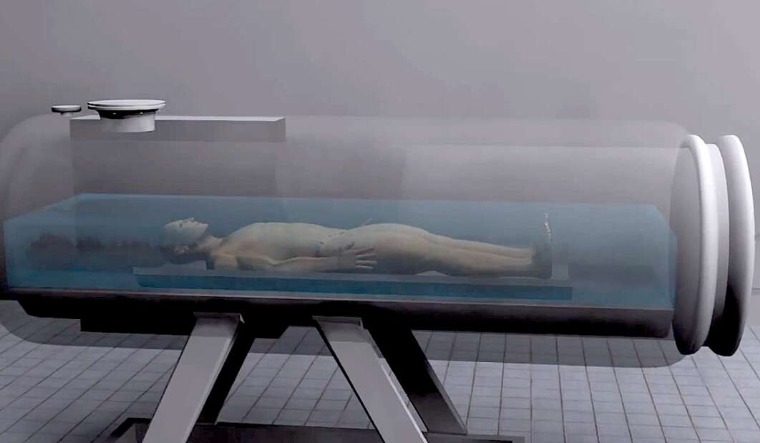How would you prefer your loved ones dispose of your mortal remains? From mummification, ground burial, cremation, cryonics and mushroom burial suits, to the latest newsmaker, aquamation or water cremation, the options are many.
South African archbishop Desmond Tutu had given instructions that his remains be aquamated. So, when the anti-apartheid activist passed away recently, it had everyone asking what this eco-friendly process involved.
What is aquamation?
Aquamation goes by many names—water cremation, alkaline hydrolysis, liquid cremation, hydro cremation, bio cremation or resomation. It is an eco-friendly option of burial that uses alkaline hydrolysis to dispose of human or animal remains.
Instead of the traditional fire used in cremation, aquamation combines a solution of water, heat and strong alkali like potassium hydroxide in a pressurised cylinder. The tissues of the body of the deceased are liquified completely in the four-hour process, leaving behind the bones. Typically, the bones are heated to white ash and given to the relatives.
Who started it?
Alkaline hydrolysis has been around since the 1880s. Amos Herbert Hanson, a farmer, developed the process to make fertilisers from animal carcasses. During the BSE epidemic (generally known as mad-cow disease), aquamation was found to be a better solution than burning the cow carcasses, besides destroying the pathogens. Albany Medical College in 1993 installed the first commercial aquamation system. It was widely used as a cheaper alternative to flame cremation.
The process
The body is placed in a stainless-steel vessel which is filled with water and a strong alkali like potassium hydroxide in a ratio of 95 per cent water and 5 per cent alkali. The amount of alkali added depends on the weight, sex, and other characters of the body. Then the solution is heated to 200-300°F and the water gently flows, dissolving the organic compounds like fats, proteins, minerals and carbohydrates.
After the process, the bones, fluid, dental fillings, prosthetics or implants of the person will remain, which can be passed on to the family. The fluid used for the process is ‘clean’ and has natural proteins, peptides, sugars and salts from the human body.
The liquid is released, and the remains are rinsed with fresh water. Eventually, the bone is reduced to ashes and returned to the family.
The process of aquamation takes about 6-8 hours or 18-20 hours, depending on the temperature used.
Where is aquamation legal?
Aquamation was first legalised in Minnesota, USA, in 2003, while in 2012, Saskatchewan was the first province in Canada to approve the process of burial. But it was not until 2011 that the process was being used in the funeral industry. It was Sandy Sullivan, a Scottish biochemist, in 2009, who developed the water chamber for human cremation. He termed the system the ‘Resomator’.
Today, it is legal in many places in Canada, the USA, Australia, Mexico and Netherlands and many people are adopting water cremation.
Aquamation vs fire cremation
Aquamation differs from flame cremation in the environmental impact it creates. Very few resources and energy are needed for aquamation, including low temperature. Flame cremation emits harmful chemicals like carbon monoxide and mercury (from dental amalgamation) whereas water cremation does not directly emit greenhouse gases or mercury.
While in aquamation, the ashes are bone materials, ashes in flame cremation can contain body remains.
The colour of the ashes from flame cremation is often grey while in aquamation the quantity is more with white or tan colour.
Environmental impact of aquamation
There is no direct emission of greenhouse gasses or the burning of fossil fuels involved in aquamation. Sources report that the process uses less water than the water consumption of a day in a household. With very limited burial spaces, this alternative is very effective as it doesn’t take up much space.
Usually, bodies are buried in coffins that are made using wood that takes a long time to decompose. In the case of a water cremation, the body is directly placed in the water chamber.
Why did Tutu opt for it?
Desmond Tutu, the Nobel Peace Prize winner who passed away at 90, was passionate about environmental protection, and known for his humble lifestyle. His decision was influenced by his concern for the environmental impact of other forms of burial.
Lately, pet owners have been making use of the technology to dispose of the remains of their animals. Nexstar Media Wire reported that in New York a company named Compassionate Care Pet Aquamation in Oceanside is accomplishing aquamation for pets.
With many end-of-life options, aquamation is indeed an environmentally conscious choice.





